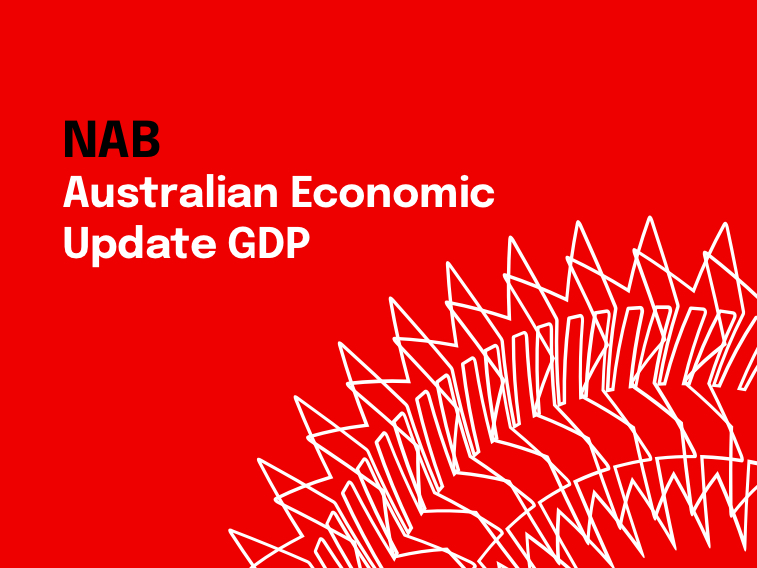Consumers lead the way


Insight
Both business confidence and conditions declined in the month, with both now at +1 index point – well below long-run averages.
Both business confidence and conditions declined in the month, with both now at +1 index point – well below long-run averages. This outcome suggests that momentum in the business sector continues to weaken, with both confidence and conditions well below the levels seen in 2018 – and is in line with the weak outcome for the private sector in the Q2 national accounts, prompting us to review our outlook for interest rates which will be released alongside tomorrow’s updated set of forecasts. Weaker conditions and a decline in forward orders (which are negative and well below average), have seen reported capex decline to around average. While capacity utilisation rose in August, it has been volatile in recent months and is a little below the levels seen a year ago. Despite the slowing in activity, and a pull-back in expansion plans, the employment index remains around average. At one end of the scale, mining continues to stand out, seeing the most favourable conditions and confidence, as well as elevated employment and capex. Retail on the other hand, remains weak despite a sharp improvement in the month, with conditions deeply negative. Construction and manufacturing are also weak, likely reflecting developments in the residential construction sector as well as weak domestic demand and globally weak confidence. The survey still suggests weak price pressures, which against a backdrop of slowing activity may well weaken further.
Podcast
Our podcast series to accompany the NAB Monthly Business Survey continues, giving you a 10 minute summary of the key survey developments this month. Listen now.
Key highlights
Business conditions fell 2 pts to +1 index point in August, with the trading and profitability sub-indexes lower. The employment component rose 2pts to be around its average level. The decline in the month was driven by transport & utilities, finance, business & property services and mining. Retail saw a significant improvement, though remains very weak with conditions deeply negative.
Business confidence also declined in the month, falling 3pts to +1 index point. While it remains positive, it is well below its long run average of +6 index points. Confidence was weaker across most industries, but increased in manufacturing and mining in the month.
According to Alan Oster, NAB Group Chief Economist “Both confidence and conditions declined further in the month, and have continued their run of below-average reads. Looking at the components of business conditions, both trading and profitability weakened. Employment rose to its average level of +2 index points, which is positive but something we will continue to watch closely”.
“Conditions in the retail sector remain very weak, even after a sharp improvement in the month. This provides us with another indicator that household consumption has remained weak well into Q3, following the weak outcomes over the past few quarters. It looks like the tax cuts have had little impact on household consumption or have not been large enough to offset increasing weakness in the sector. The two rate cuts also may have had little impact, though this is expected with the longer and more variable lags of monetary policy” said Mr Oster.
“Mining remains the standout, with conditions well above that of other industries. It looks like investment in the sector has troughed or is very close and with commodity prices still high and exports strong the sector appears to be travelling well” said Mr Oster.
Forward-looking indicators remain weak. Forward orders edged lower in the month and remain well below average. Capacity utilisation rose in August, but has been volatile of late. In trend terms, it remains a little below the levels seen a year ago.
“Business confidence and our other forward looking indicators suggest there is unlikely to be an imminent turnaround in business conditions. While conditions are still positive, they have now been below average for some time and point to a significant loss of momentum in private demand. This has played out in official data, with the national accounts for Q2 suggesting the bulk of growth in the quarter was driven by the public sector and exports” Mr Oster said.
“It is possible global developments have begun to weigh on the business sector, but domestically the weakening in consumption growth and the downturn in the housing market have clearly weighed on the business sector. A key offset will be the large pipeline of public infrastructure investment. The ongoing weakness in the sector has prompted us to review our outlook for interest rates, which we will release alongside our updated forecasts tomorrow” said Mr Oster.
For more information, please see the NAB Monthly Business Survey August 2019 and NAB Monthly Business Survey Media Release – August 2019.
© National Australia Bank Limited. ABN 12 004 044 937 AFSL and Australian Credit Licence 230686.